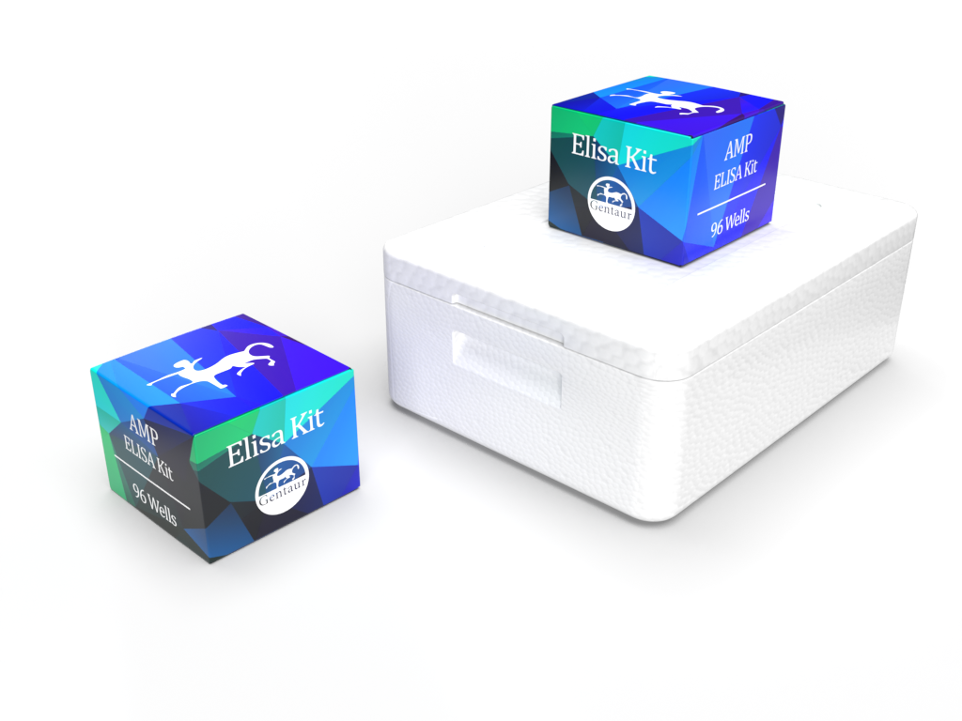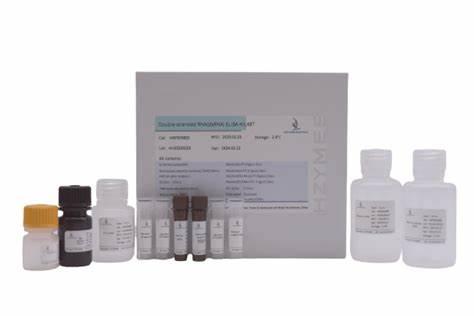UltraNuclease (EC 3.1.30.2): Unleashing Precision in Nucleic Acid Cleavage for Advanced Molecular Applications
Introduction
In the realm of molecular biology, the demand for precise and efficient tools for nucleic acid manipulation is ever-growing. Enter UltraNuclease (EC 3.1.30.2), a revolutionary enzymatic solution meticulously engineered to redefine the landscape of nucleic acid cleavage. This advanced enzymatic tool empowers researchers with unparalleled precision, enabling groundbreaking advancements in molecular applications.
UltraNuclease (EC 3.1.30.2)
UltraNuclease (EC 3.1.30.2) is a non-specific endonuclease that cleaves both DNA and RNA. It is produced by the bacterium Serratia marcescens. UltraNuclease is a highly active enzyme, with a turnover number of up to 100,000 units/mg. It is also very stable, and can withstand high temperatures and pH extremes.
UltraNuclease is widely used in molecular biology and biotechnology for various applications, including the removal of contaminating DNA and RNA, manipulation of nucleic acid samples, and preparation of samples for molecular analyses. It can also be utilized in diagnostic and research applications, as well as in DNA and RNA purification processes.
This enzyme is commonly employed in research laboratories and the industry to facilitate the handling of DNA and RNA, thereby enabling a better understanding of biological and molecular processes. It is appreciated for its specificity and effectiveness in targeted degradation of nucleic acids.
| Protocol | Purpose | Materials | Procedure |
|---|---|---|---|
| DNA Fragmentation | To fragment DNA for various molecular biology techniques | UltraNuclease, DNA sample, reaction buffer, EDTA | Combine DNA sample, UltraNuclease, and reaction buffer in a sterile tube. Incubate at 37°C for 30 minutes. Stop the reaction by adding EDTA. Analyze the fragmented DNA using agarose gel electrophoresis. |
| Site-Directed Mutagenesis | To introduce mutations into DNA | UltraNuclease, DNA template, oligonucleotide primers, reaction buffer, DpnI restriction enzyme | Perform PCR using the DNA template and oligonucleotide primers to amplify the desired region. Treat the PCR product with DpnI restriction enzyme to digest the parental template DNA. Combine PCR product, UltraNuclease, and reaction buffer in a sterile tube. Incubate at 37°C for 30 minutes. Transform the reaction product into competent cells using a suitable transformation method. Screen the transformants for the desired mutation using a suitable method. |
| Drug Screening | To screen for drugs that bind to specific DNA or RNA sequences | UltraNuclease, drug candidates, DNA or RNA sample, reaction buffer | Combine DNA or RNA sample, UltraNuclease, drug candidate, and reaction buffer in a sterile tube. Incubate at 37°C for 30 minutes. Analyze the DNA or RNA sample using agarose gel electrophoresis to see if it has been cleaved by UltraNuclease. |
UltraNuclease (EC 3.1.30.2)
Here are some specific examples of how UltraNuclease is used in biotechnology:
- DNA fragmentation: UltraNuclease can be used to fragment DNA for Southern blotting, northern blotting, and other molecular biology techniques.
- RNA fragmentation: UltraNuclease can be used to fragment RNA for RNA sequencing and other transcriptome analysis techniques.
- Site-directed mutagenesis: UltraNuclease can be used to create double-stranded breaks in DNA at specific locations. These breaks can then be repaired by the cell to introduce mutations at the desired sites.
- Drug screening: UltraNuclease can be used to screen for drugs that bind to specific DNA or RNA sequences. This is done by incubating UltraNuclease with a mixture of drugs and DNA or RNA. If a drug binds to the DNA or RNA, it will protect it from cleavage by UltraNuclease.
- Protein purification: UltraNuclease can be used to remove nucleic acids from proteins. This is done by incubating UltraNuclease with a mixture of proteins and nucleic acids. The UltraNuclease will cleave the nucleic acids, but it will not cleave the proteins.
UltraNuclease is a valuable tool for a variety of biotechnology applications. It is a highly active, stable, and versatile enzyme.
UltraNuclease (EC 3.1.30.2)
| Cat. No. (references) | Specification |
| HBP000106 | 5KU/20μL |
| HBP000107 | 50KU/200μL |
| HBP000108 | 500KU/2mL |
| HBP000109 | 5000KU/20mL |
| Application | Example | Method |
|---|---|---|
| Molecular biology | DNA fragmentation | Southern blotting, northern blotting |
| RNA fragmentation | RNA sequencing | |
| Genetics | Site-directed mutagenesis | DNA cleavage at specific locations |
| DNA repair | DNA cleavage to remove mutations | |
| Drug discovery | Screening | Incubation of UltraNuclease with a mixture of drugs and DNA or RNA |
| Bioprocessing | Nucleic acid removal from proteins | Inactivation of nucleic acids by UltraNuclease |
Key Features
1. Unrivaled Specificity
UltraNuclease is crafted with a level of specificity that sets it apart. Its precision in recognizing and cleaving nucleic acid sequences is unparalleled, ensuring accurate and reproducible results across a spectrum of applications.
2. Enhanced Efficiency
This enzymatic marvel operates with remarkable speed, accelerating nucleic acid cleavage reactions to unprecedented levels. Researchers can now achieve their desired results in a fraction of the time, streamlining workflows without compromising accuracy.
3. Versatility in Substrate Recognition
UltraNuclease exhibits versatility in recognizing a broad range of nucleic acid substrates, including DNA and RNA. This adaptability makes it a versatile tool for various molecular applications, from gene editing to nucleic acid fragmentation.
4. Low Off-Target Effects
The advanced design of UltraNuclease minimizes off-target effects, ensuring that cleavage occurs precisely at the intended sites. This feature is crucial for applications where accuracy is paramount, such as gene editing and targeted sequencing.
Advantages
1. High Fidelity Cleavage
Researchers can trust UltraNuclease to deliver high-fidelity cleavage, maintaining the integrity of the target sequences even in complex genomic environments.
2. Optimized Reaction Conditions
The enzymatic formulation of UltraNuclease is optimized for a wide range of reaction conditions, providing researchers with flexibility and control over experimental parameters.
3. Seamless Integration into Workflows
Designed for compatibility with standard molecular biology protocols, UltraNuclease seamlessly integrates into existing experimental workflows. Researchers can incorporate this powerful tool without the need for extensive protocol adjustments.
Applications
1. Genome Editing
UltraNuclease plays a pivotal role in genome editing applications, facilitating precise cleavage for targeted modifications and gene knockout studies.
2. Library Preparation
In library preparation for next-generation sequencing, UltraNuclease ensures uniform and reproducible fragmentation of nucleic acid samples, contributing to the generation of high-quality libraries.
3. Molecular Cloning
Researchers can rely on UltraNuclease for efficient nucleic acid cleavage in molecular cloning, streamlining the process of constructing recombinant DNA molecules.
UltraNuclease has a wide range of applications in biotechnology, including:
- Molecular biology: UltraNuclease can be used to fragment DNA and RNA for analysis or cloning.
- Gene editing: UltraNuclease can be used to create double-stranded breaks in DNA, which can be repaired by the cell to introduce mutations.
- Drug discovery: UltraNuclease can be used to screen for drugs that bind to specific DNA or RNA sequences.
- Bioprocessing: UltraNuclease can be used to remove nucleic acids from proteins and other biomolecules.
Conclusion
UltraNuclease (EC 3.1.30.2) represents a paradigm shift in the field of molecular biology. With its unmatched specificity, efficiency, and versatility, this enzymatic powerhouse empowers researchers to push the boundaries of what's possible in nucleic acid cleavage. Whether you're delving into genome editing, library preparation, or molecular cloning, UltraNuclease stands as a catalyst for precision and innovation. Elevate your molecular applications to new heights—choose UltraNuclease for a future where precision meets progress in nucleic acid cleavage.


